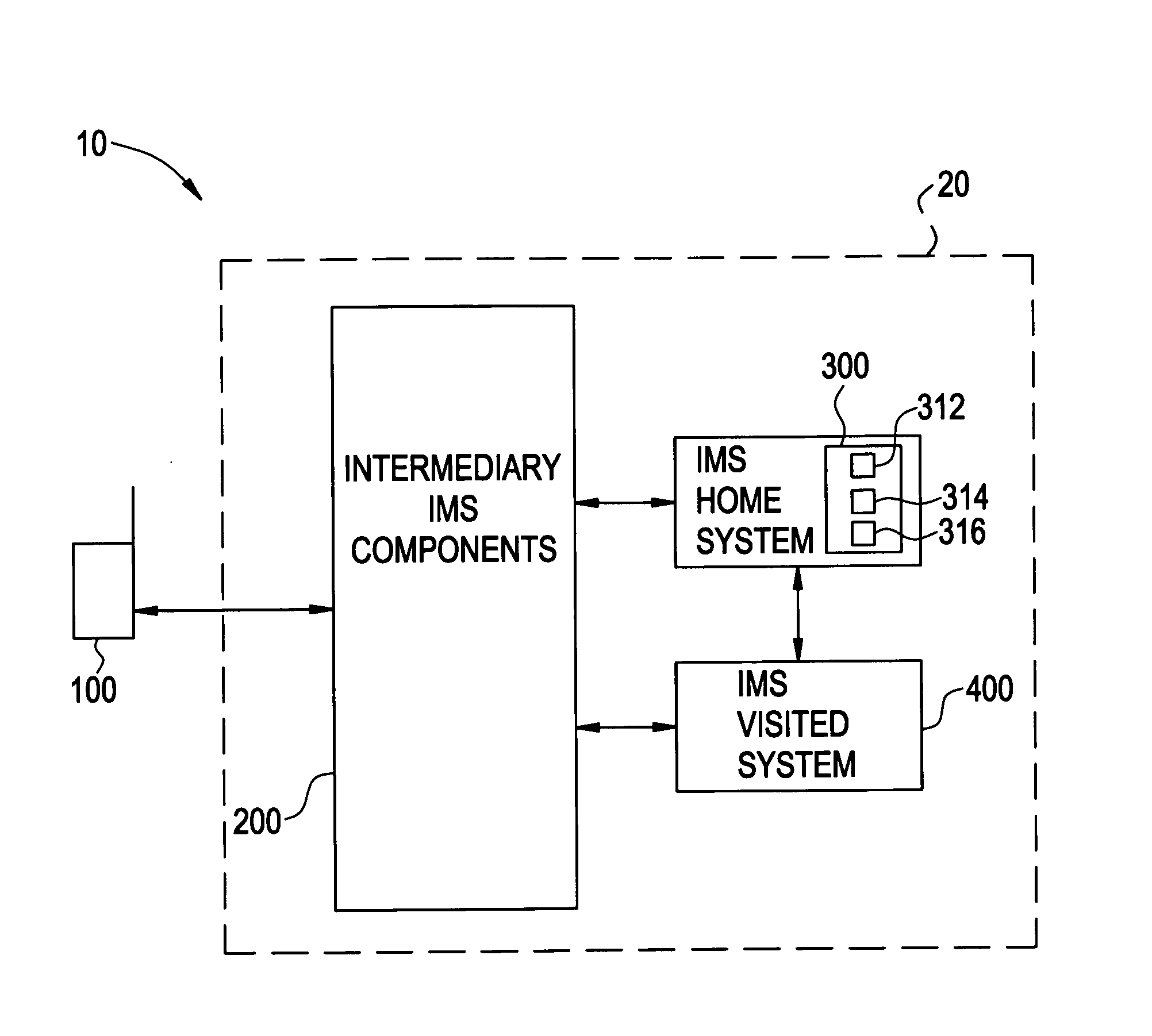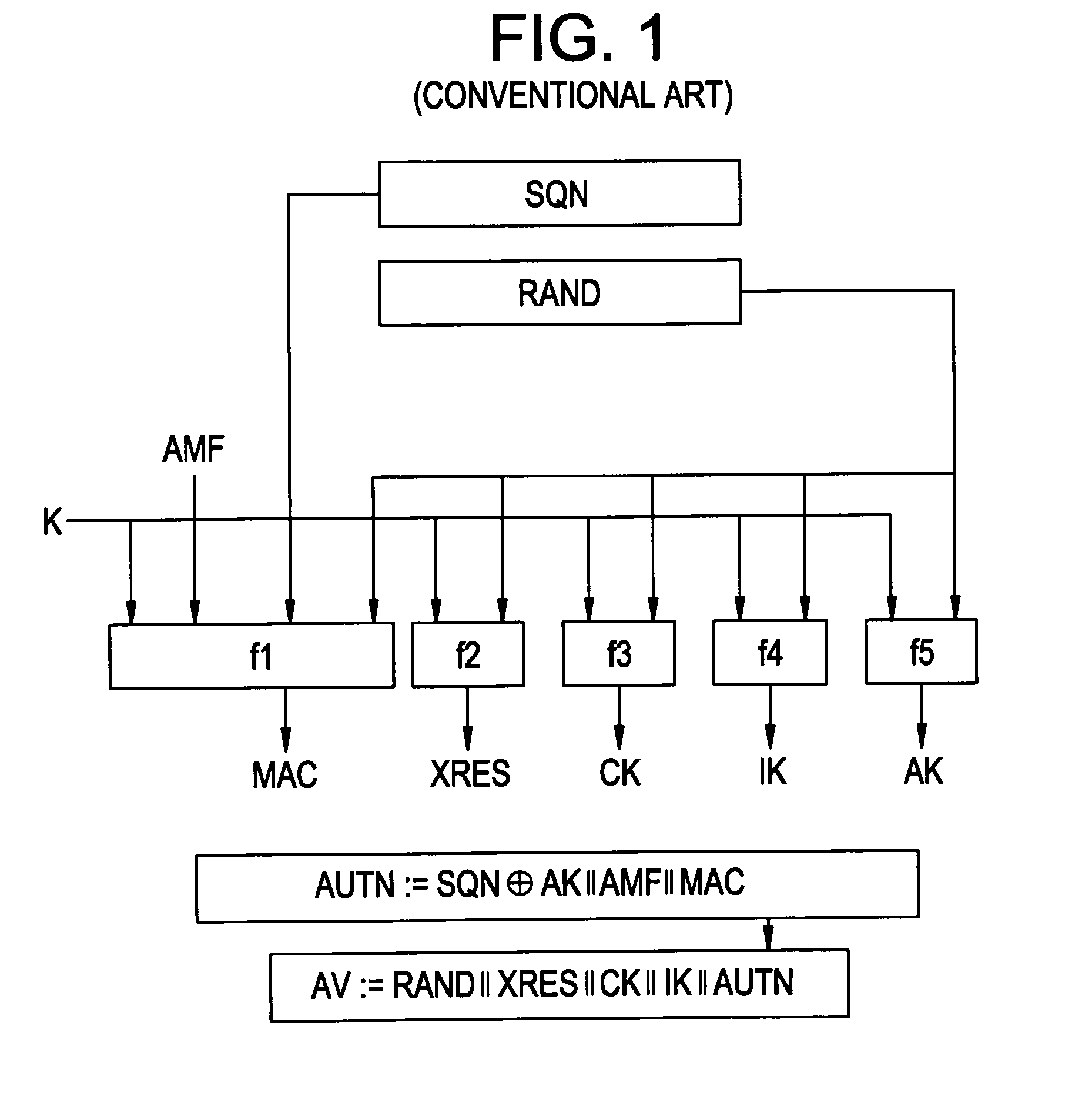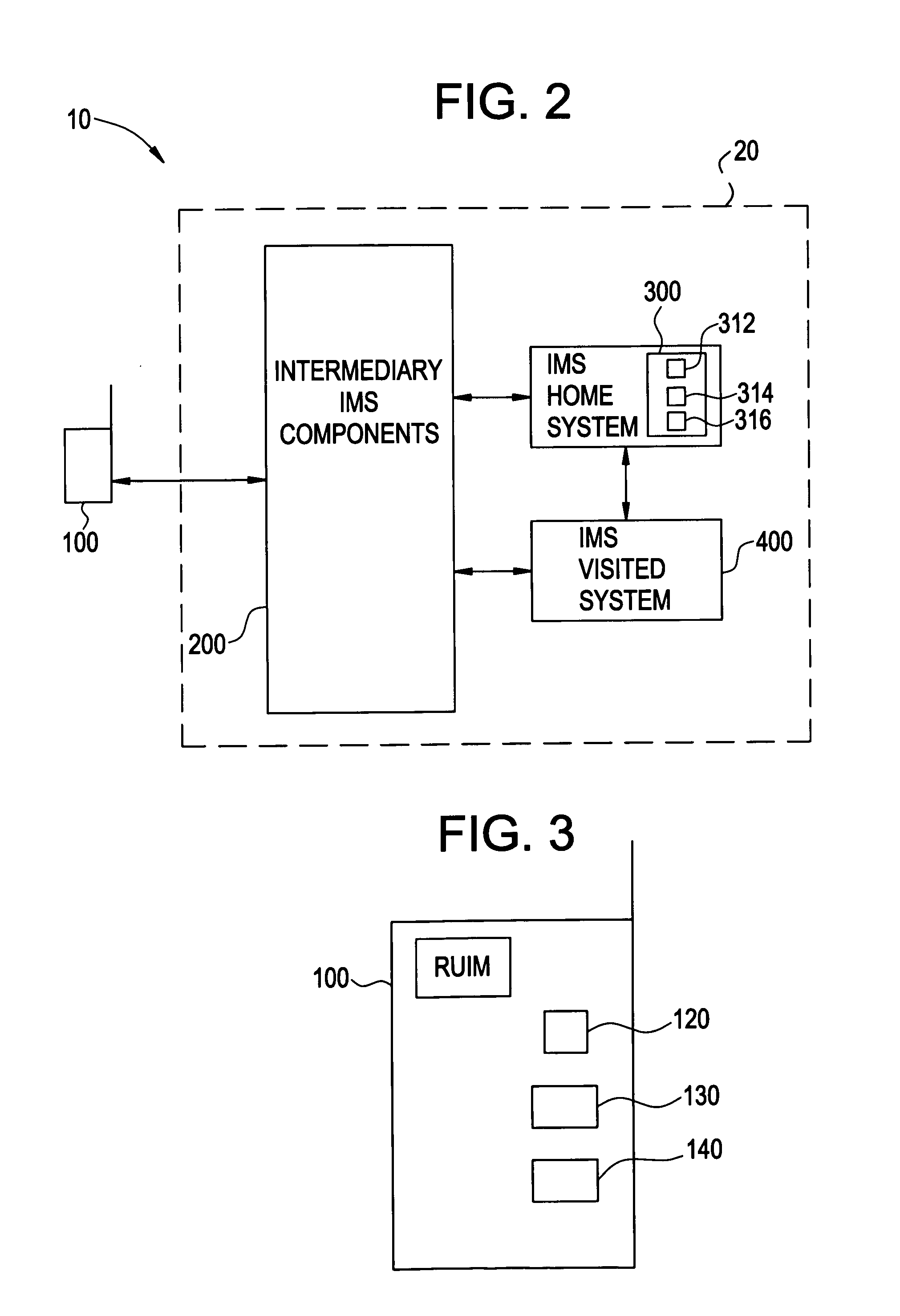Method and system of communication using extended sequence number
a technology of extended sequence number and wireless communication, applied in the field of wireless communication using extended sequence number, can solve the problems of inability to update the hardware equipment used for wireless communication, inability to process the more highly evolved protocols, and inability to provide mutual authentication
- Summary
- Abstract
- Description
- Claims
- Application Information
AI Technical Summary
Problems solved by technology
Method used
Image
Examples
Embodiment Construction
[0041]FIG. 2 illustrates a communication system 10 including at least one mobile station 100 and a network 20. One skilled in the art will appreciate that the network 20 should not be limited to the abbreviated portion of an IP multi-media sub-system (IMS), which is illustrated in the embodiment of FIG. 2. In FIG. 2, the IMS network 20 includes an IMS home system 300, an IMS visited system 400 and intermediary IMS components 200. While the intermediary IMS components 200 are merely shown as a block in the network 20, one skilled in the art will appreciate that the intermediary IMS components 200 may include, for example, a P-CSCF, and I-CSCF, an HSS, and an S-CSCF arranged between the mobile equipment 100 and the IMS home system 300 and IMS visited system 400. The IMS home system 300 and the IMS visited system 400 may communicate with each other directly or via the intermediary IMS components 200 to provide service to the mobile equipment 100. The location of the mobile equipment, t...
PUM
 Login to view more
Login to view more Abstract
Description
Claims
Application Information
 Login to view more
Login to view more - R&D Engineer
- R&D Manager
- IP Professional
- Industry Leading Data Capabilities
- Powerful AI technology
- Patent DNA Extraction
Browse by: Latest US Patents, China's latest patents, Technical Efficacy Thesaurus, Application Domain, Technology Topic.
© 2024 PatSnap. All rights reserved.Legal|Privacy policy|Modern Slavery Act Transparency Statement|Sitemap



